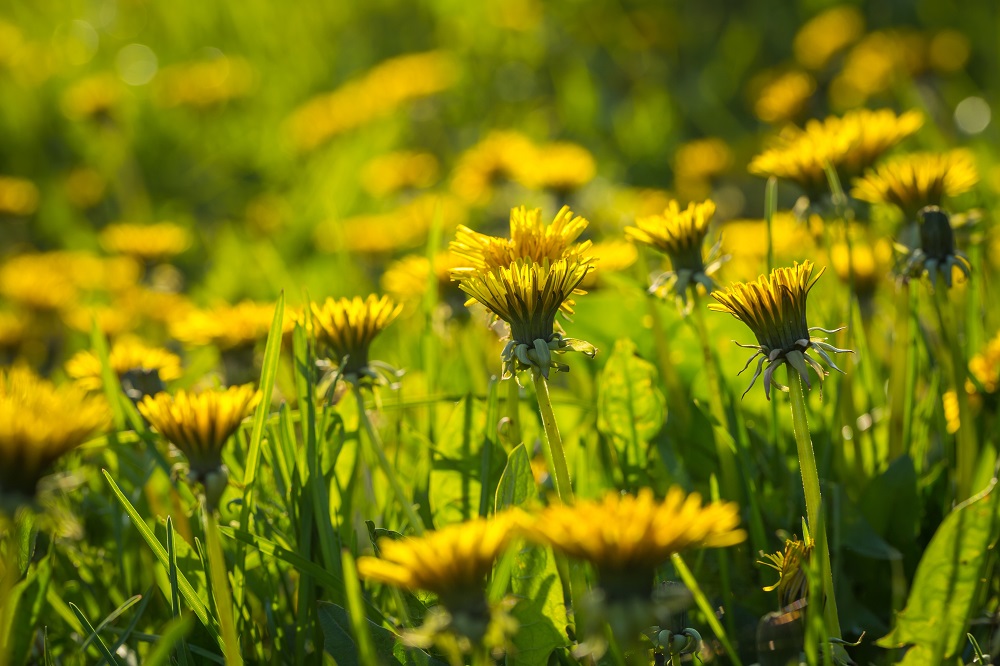Pollen levels are the concentration of pollen in the air, based on your location within the nation. Checking the pollen levels in your area is a helpful tool if you suffer from allergies or hay fever. Pollen levels vary by location and are directly affected by weather conditions.
If you are an allergy sufferer, you can use the pollen count to help manage your allergies. Checking daily pollen counts before making outdoor plans can help you avoid an allergy attack. If you are seeking allergy or asthma treatment, contact the top allergy and asthma specialist in New York, Dr. Shukla.
In general, spring and summer are when pollen count is highest. This is when plants, grasses, and trees are flowering, particularly in the early mornings.
Warm, dry, and windy weather and climates with little or no rain have high pollen levels. This is because the conditions allow for the pollen to spread easily through the air. Rain or cool weather dramatically drops allergy levels, because they cleanse the air or halt the spread of pollen.
However, you should note that many plants pollinate year-round, so you could experience allergy symptoms year-round.
Pollen Calendar for the Northeast US by Month
*Indicates severe allergen
February-April
This is when tree pollens will be prevalent. In February, it is only Alder, Cedar, and Juniper* trees. In March and April, you can add Ash*, Birch, Cottonwood*, Elm, American, and Maple* trees. Other severe allergen trees begin to blossom in April including Mulberry*, Oak*, Pecan*, and Sycamore*. In April, we also see the first of the weeds that will show up in summer– Plantain*.
May
In May the Alder, Cedar, and Juniper* dissipate, but Walnut, and Black* tree pollens appear for the first time. There is also the addition of Dock/Sorrell weed. If you have grass allergies, take note- May is when they begin to appear. These include Bermuda*, Kentucky Bluegrass*, Meadow Fescue*, and Rye*.
June
By June, the only trees left in bloom will be Walnut and Black* trees. However, the air will be full of pollen from weeds and grasses. Weed pollens in June include Careless/ Pigweed*, Dock/ Sorrell, Lambsquarters, Marsh-elder*, Nettle, Plantain*, and Sage*. June is the month when ALL the local grasses are prevalent. This means Bermuda*, Johnson Grass, Kentucky Bluegrass*, Meadow Fescue*, Rye*, and Timothy*. As you can see, almost all grasses are severe allergens, and this makes June a particularly perilous month for allergy sufferers.
July
In July, the grasses begin to subside, but the weeds come into full effect. Kentucky Bluegrass* and Meadow Fescue* grasses go into hiding, but all the rest will still be in the air. In addition to the weeds that were prevalent in previous months, in July we see the rise of Russian Thistle*, Ragweed*, and Cocklebur.
August
August gets better in terms of grasses and trees, but there are still a lot of weed pollens in the air. Walnut and Black* tree pollens dissipate, as do Nettle and Cocklebur weeds. All the rest of the weeds are still in bloom, however. The good news is that by August, the only grasses left are Bermuda* and Johnson Grass.
September
September is the month when seasonal allergy sufferers finally get a little relief. The good news is there is less pollen in the air; the unwelcome news is, they are almost all severe allergen pollens. The only grass left in September is Bermuda*. In September, we once again see the appearance of Cedar and Juniper* trees. The weeds that are left from summer are Cocklebur, Dog Fennel*, Ragweed*, and Sage*.
October-November
In October the last of the grasses goes away, as do most of the remaining weeds. What’s left are Cedar and Juniper* trees, and Ragweed* and Dog Fennel* weeds. By November, all that’s left are the Cedar and Juniper* trees.
December-January
These cool, wet, windy winter months are the best for allergy sufferers. All the pollens go into hiding and you should not experience any problems with your allergies.
Allergy and Asthma Specialist in New York
Dr. Mayank Shukla takes pride in being the top asthma specialist in New York. With offices in Brooklyn, Staten Island, Queens, and Manhattan, Dr. Shukla sees over 5,000 patients per year in the New York city area. If you are suffering from seasonal allergies, contact us today at (917)924-6383.

